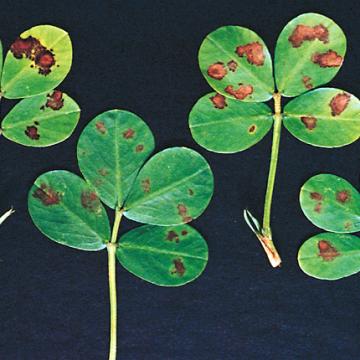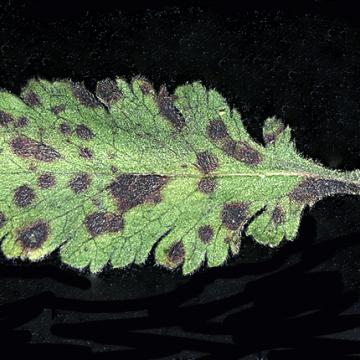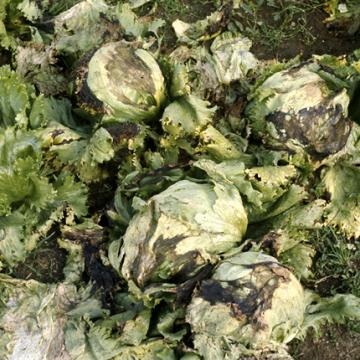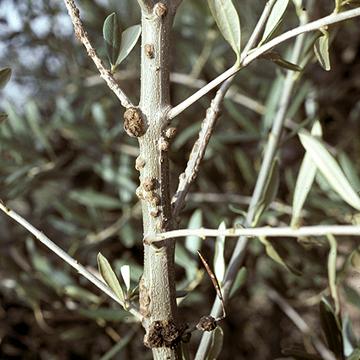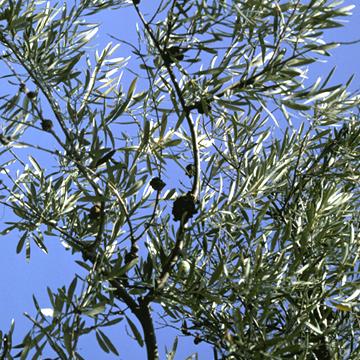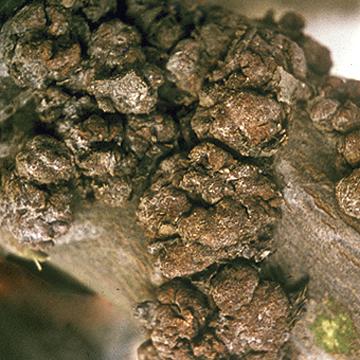DISEASE: Bacterial leaf spot
HOST: Laurel (California laurel)
Leaf with dark brown, angular spots.

Bacterial leaf spot | Laurel (California laurel)
DISEASE: Bacterial leaf spot
HOST: Laurel (California laurel) (Umbellularia californica)
PATHOGEN: Pseudomonas sp.
PATHOGEN SYNONYM: Pseudomonas lauracearum
SOURCE: W. Sinclair
DISEASE: Bacterial leaf spot
HOST: Peanut
The disease causes water-soaked lesions, particularly on upper leaf surfaces. Lesions enlarge and later display brown necrotic areas. Leaflets become chlorotic and shed prematurely.
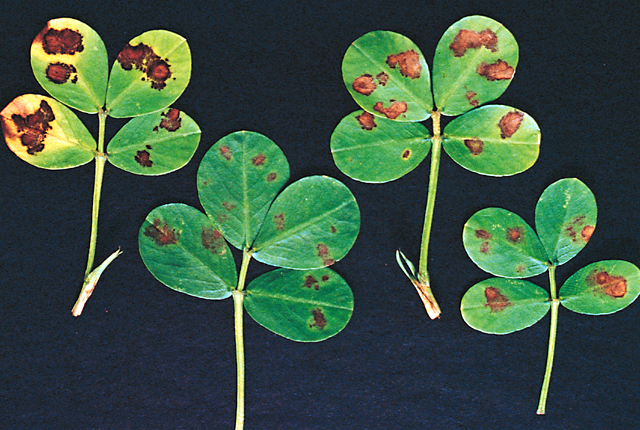
Bacterial leaf spot | Peanut
DISEASE: Bacterial leaf spot
HOST: Peanut (Arachis hypogaea)
PATHOGEN: Pseudomonas sp.
SOURCE: P. Subrahmanyam
DISEASE: Bacterial leaf spot
HOST: Verbena
Leaf with purple-brown necrotic spots.
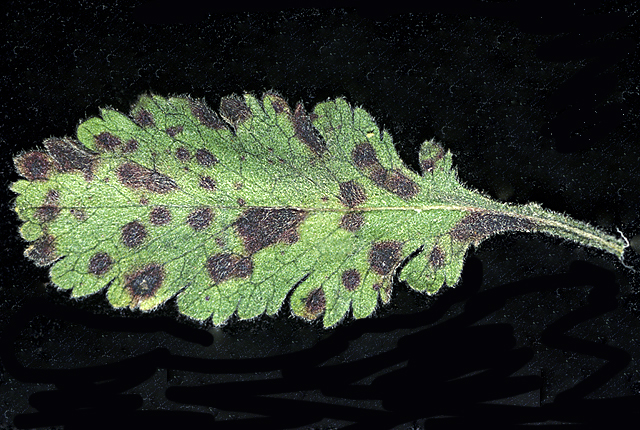
Bacterial leaf spot | Verbena
DISEASE: Bacterial leaf spot
HOST: Verbena (Verbena sp.)
PATHOGEN: Pseudomonas sp.
SOURCE: R. Raabe
DISEASE: Ear rot
HOST: Corn (Maize)
Rot at apical end of ear.
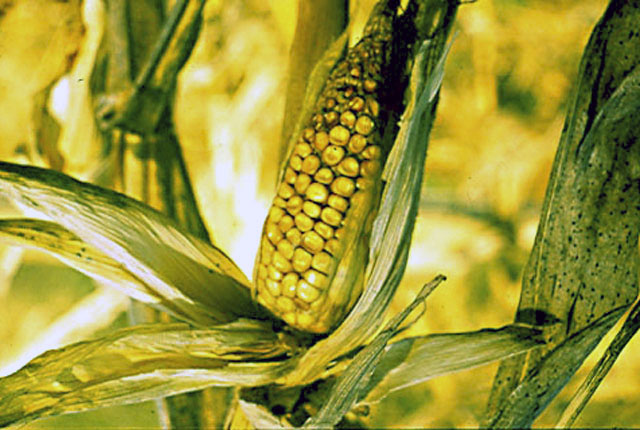
Ear rot | Corn (Maize)
DISEASE: Ear rot
HOST: Corn (Maize) (Zea mays)
PATHOGEN: Pseudomonas marginalis
SOURCE: L. Fucikovsky
DISEASE: Marginal leaf blight
HOST: Lettuce
Marginal leaf blight first appears as slimy wilting of leaf margins. Small, reddish lesions may be seen on leaf blades. Infected tissues turn brown to black in time.
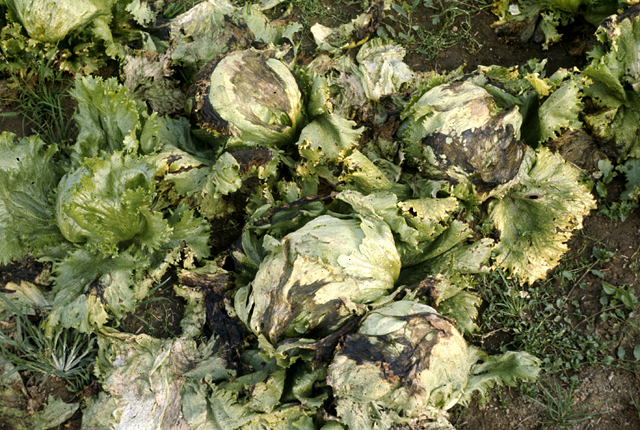
Marginal leaf blight | Lettuce
DISEASE: Marginal leaf blight
HOST: Lettuce (Lactuca sativa)
PATHOGEN: Pseudomonas marginalis
SOURCE: L. Fucikovsky
DISEASE: Olive knot
HOST: Olive
Multiple infections of young stems. The bacterium invades vascular tissues during certain times of the year and may be isolated from branches that appear healthy.
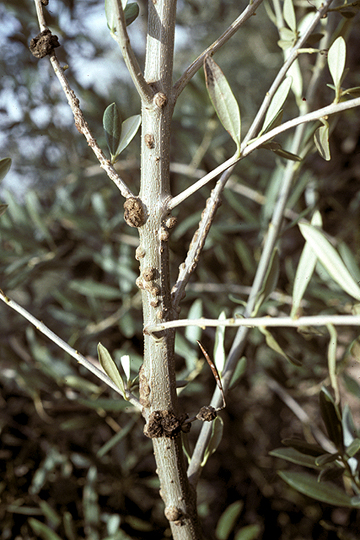
Olive knot | Olive
DISEASE: Olive knot
HOST: Olive (Olea europaea)
PATHOGEN: Pseudomonas savastanoi pv. savastanoi
SOURCE: M. Schroth
DISEASE: Olive knot
HOST: Olive
Tree with knots/galls on branches along with twig dieback, which is associated with knots. Fusarium and Diplodia spp. infect through knots and are thought to be main reason for dieback.
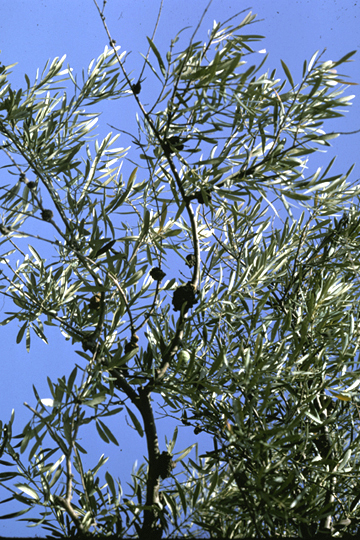
Olive knot | Olive
DISEASE: Olive knot
HOST: Olive (Olea europaea)
PATHOGEN: Pseudomonas savastanoi pv. savastanoi
SOURCE: M. Schroth



